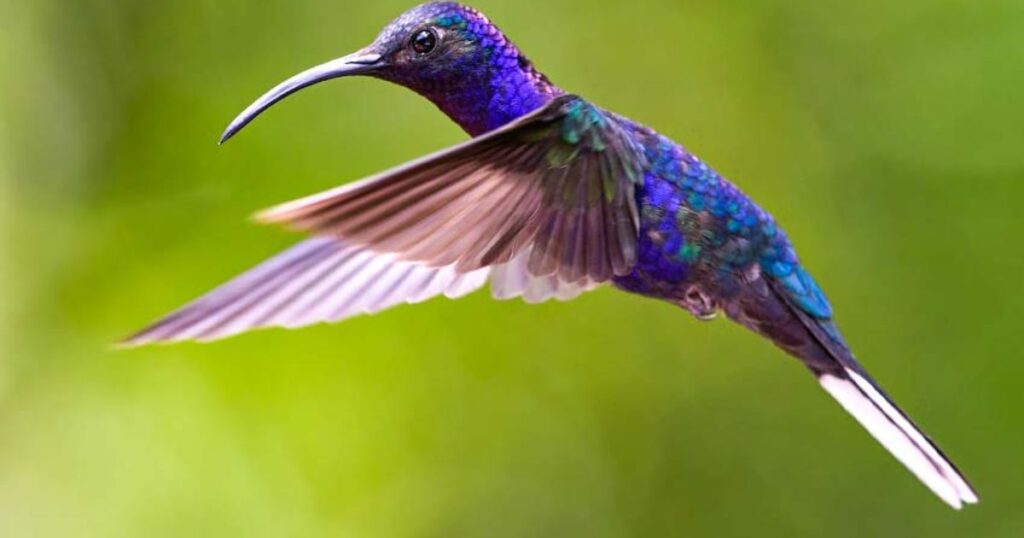If you’re captivated by nature’s brilliant colors, get ready to be dazzled! While birds adorned in pure purple plumage are incredibly rare, our planet is home to hundreds of avian species that flaunt magnificent lilac, violet, and plum hues.
From tiny hummingbirds to majestic herons, these 10 gorgeous purple birds will leave you breathless with their eye-catching elegance.
10 Beautiful Purple Birds around the World
1. Violet Sabrewing (Campylopterus hemileucurus)
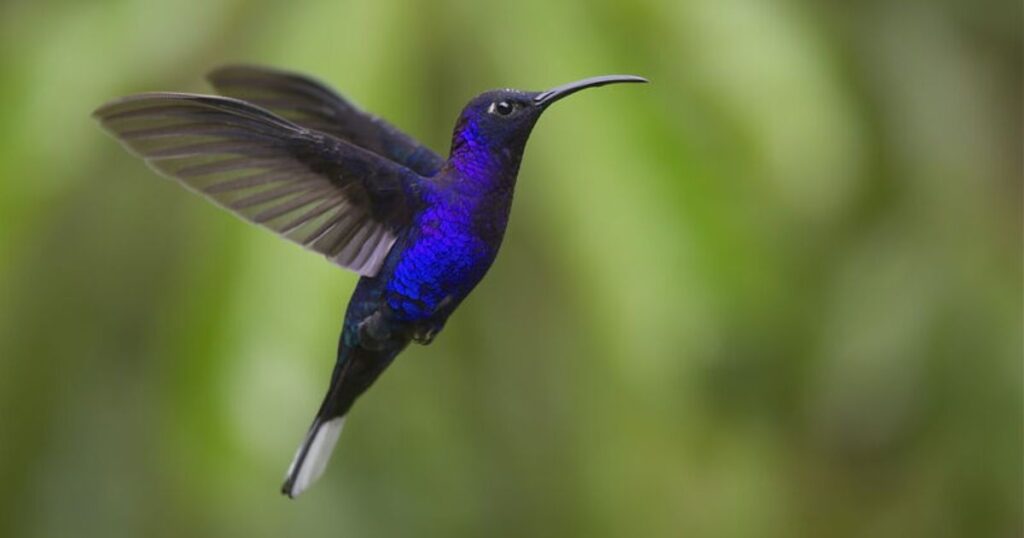
Geographic Range: Panama, Mexico, Costa Rica, and other South American regions
Habitat: Forests
Male vs Female: The iridescent male is a vision in purple, except for his green back. Females spot purple only on their throats, with gray and dark green feathers elsewhere.
Fascinating Fact: This larger-than-most hummingbird actually has blackish plumage, which totally showcases its flashy purple plumage when it catches the light. Violet Sabrewings feed on flowering plants and love drinking nectar, spiderwebs, and other arthropods.
2. Gouldian finch (Chloebia gouldiae)
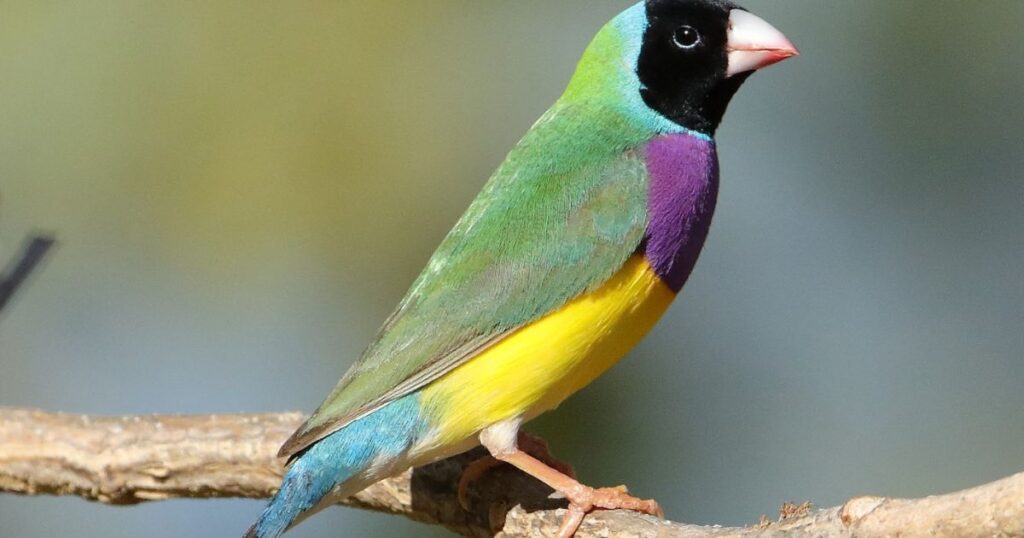
Origin: Australia
Habitat: Tropical savanna woodlands
Male vs. Female: Adult male Gouldian Finches have bright purple breast feathers, while adult females have a duller purple chest.
Fascinating Insight: One of the most interesting things about Gouldian finches is that the females have been shown to control the sex of their offspring by choosing their mates based on their head color – a rare example of gender differences influencing reproduction.
These “Rainbow Finches” may not be fully purple, but their vivid colors, including a purple chest, yellow belly, green back, and blue nape, earn them a spot on this list. Despite their vibrancy, these seed-eaters have “Near Threatened” conservation status.
Read More : Which Birds Lay Blue Eggs?
3. Broad-billed Hummingbird (Cynanthus latirostris)
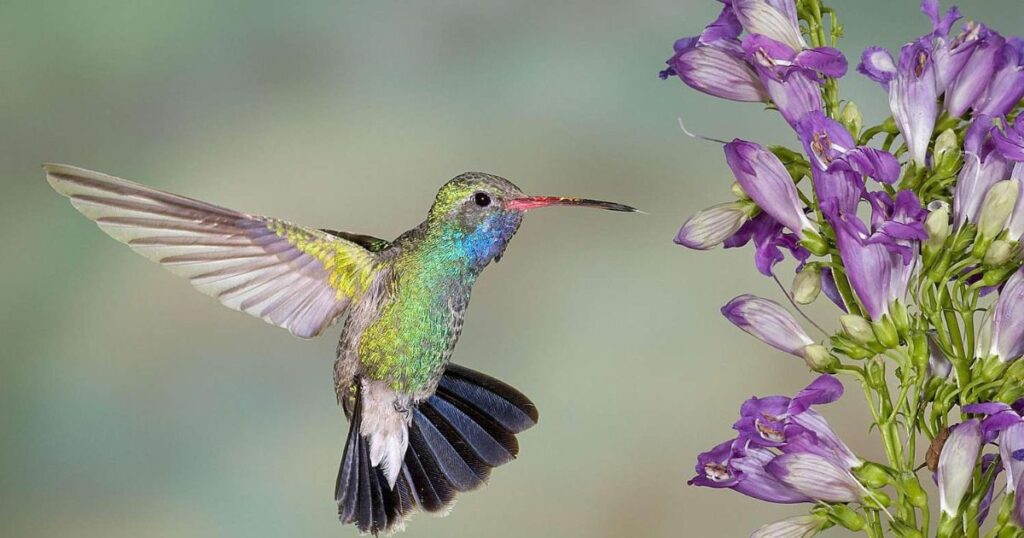
Geographic Range: Mexico and the southwestern United States Habitat: Oak and cottonwood woodlands Male vs Female: Adult males have rich green plumage, a blue throat, and an ombre purple tone that covers their body. Females have gray underwings and a white line behind the eye.
Fun Fact: These tiny birds can consume almost double their weight in nectar daily! Their soft, trill-like songs are a pleasant contrast to the typical loud hummingbird chatter.
4. Boat-tailed Grackle (Quiscalus major)
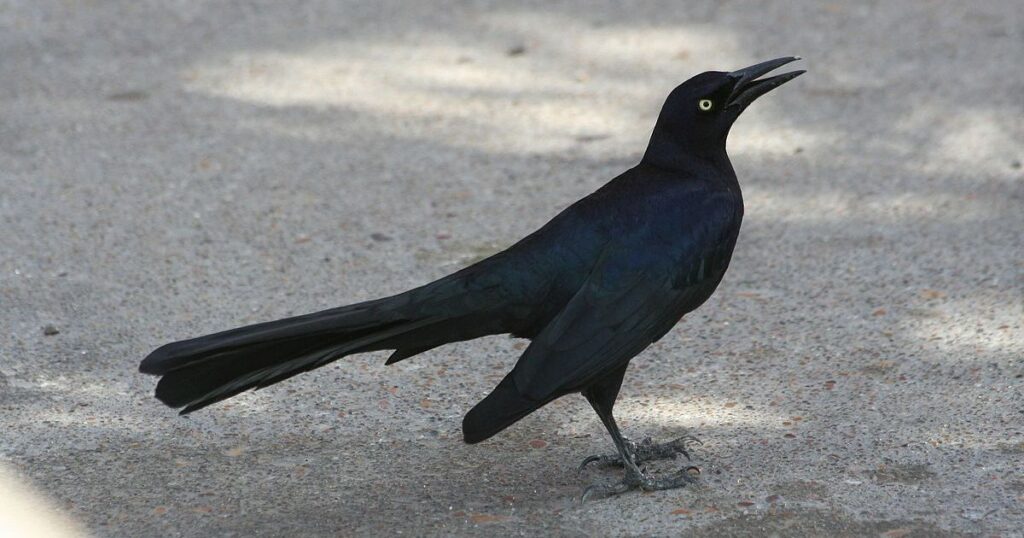
Range: Coasts of the Southeastern United States
Habitat: Grasses of freshwater, salt, and brackish marshes Appearance: Males are glossy black with an iridescent purple sheen, while females are brown above and darker brown below.
Interesting Tidbit: These large, long-tailed coastal birds are omnivores, feeding on everything from seeds and insects to small amphibians and reptiles – even discarded food scraps near shorelines!
| Species | Male Plumage | Female Plumage | Conservation Status |
| Violet Sabrewing | Iridescent purple (except green back) | Purple throat, gray and dark green | Common |
| Gouldian Finch | Bright purple breast | Duller purple chest | Near Threatened |
| Broad-billed Hummingbird | Rich green with ombre purple body | White line behind eye, gray underwings | Least Concern |
| Boat-tailed Grackle | Glossy black with iridescent purple sheen | Brown above, darker brown below | Common |
The four species above demonstrate the diversity of purple bird types, taxonomies, and patterns found in nature, from tiny nectar-sippers to quirky coastal omnivores. Let’s explore six more vibrant purple avian wonders!
5. Little Blue Heron (Egretta caerulea)
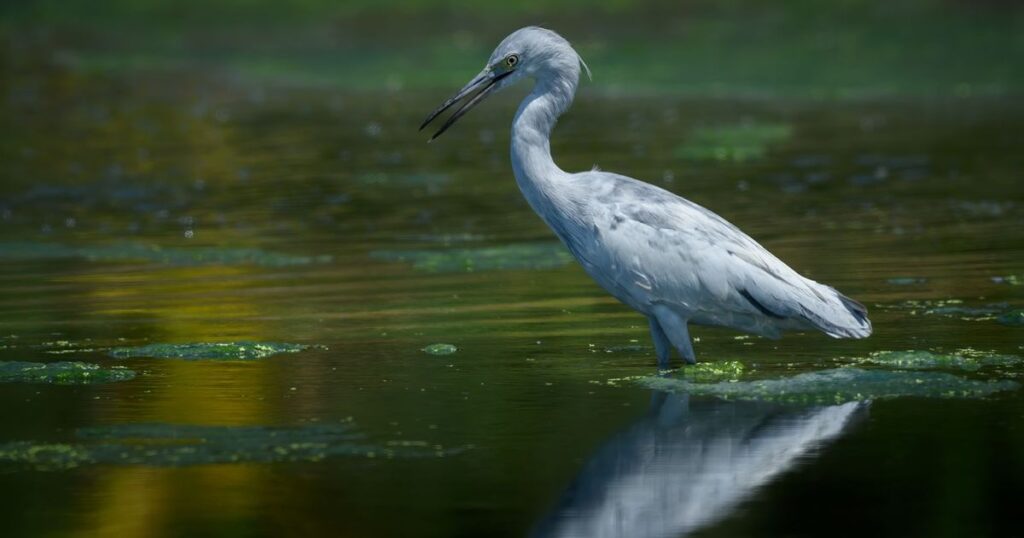
Range: Missouri, Virginia, Florida, Texas, and other U.S. states Habitat: Fresh, salt, and brackish waters like swamps, estuaries, and ponds Appearance: Plum-like dark blue bodies with purplish maroon heads. No gender dimorphism in appearance.
“The Little Blue Heron is a vivid, violet-hued wader that immediately draws your gaze no matter where it appears.” – Nature Photographer Jane Doe
These long-legged, intimidating birds hunt by waiting motionlessly for small aquatic prey to pass by, then snapping with their sharp bills. Though their populations are decreasing, their conservation status is currently “Least Concern.”
6. Lilac-breasted Roller (Coracias caudatus)
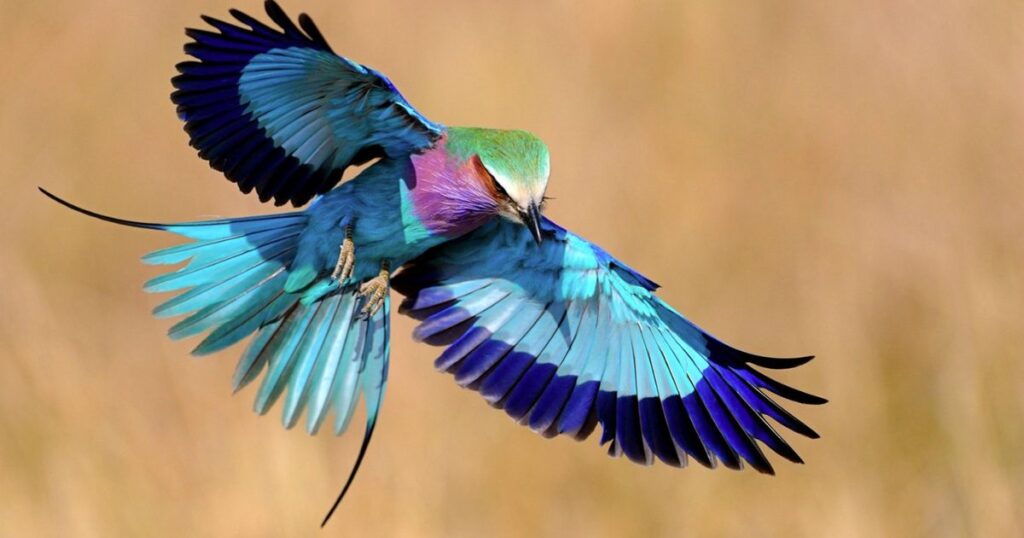
Geographic Range: Sub-Saharan Africa, southern Arabian Peninsula Habitats: Open woodlands and savannas
Colors: Green, white, yellow, turquoise, reddish brown, dark blue, and a gorgeous lilac patch on their chests.
The national bird of Kenya and Botswana, these stunners get their name from the male’s acrobatic courtship dance as it “rolls” through the air! Their diet includes grasshoppers, insects, crustaceans, and even tiny birds.
7. Japanese Paradise Flycatcher (Terpsiphone atrocaudata)
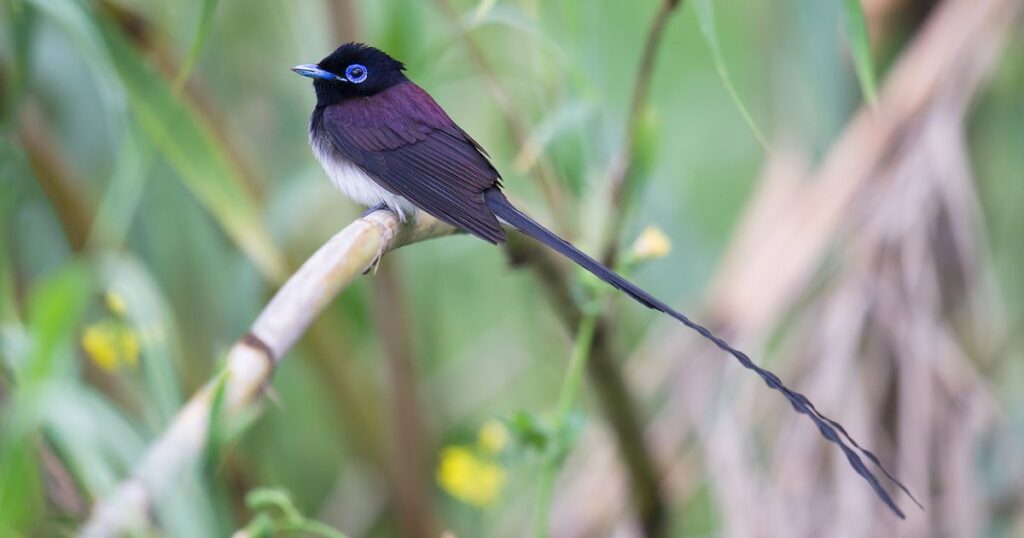
Range: Japan, South Korea, and other parts of eastern and southeastern Asia Habitat: Forests and wooded areas Plumage: Males are purplish-brown with dark heads and light underbellies. Females are reddish-brown.
These “black paradise flycatchers” are known for their coarse, whistling songs. Though beautiful, their populations are decreasing, earning them a “Near Threatened” conservation status.
8. Violet-Backed Starling (Cinnyricinclus leucogaster)
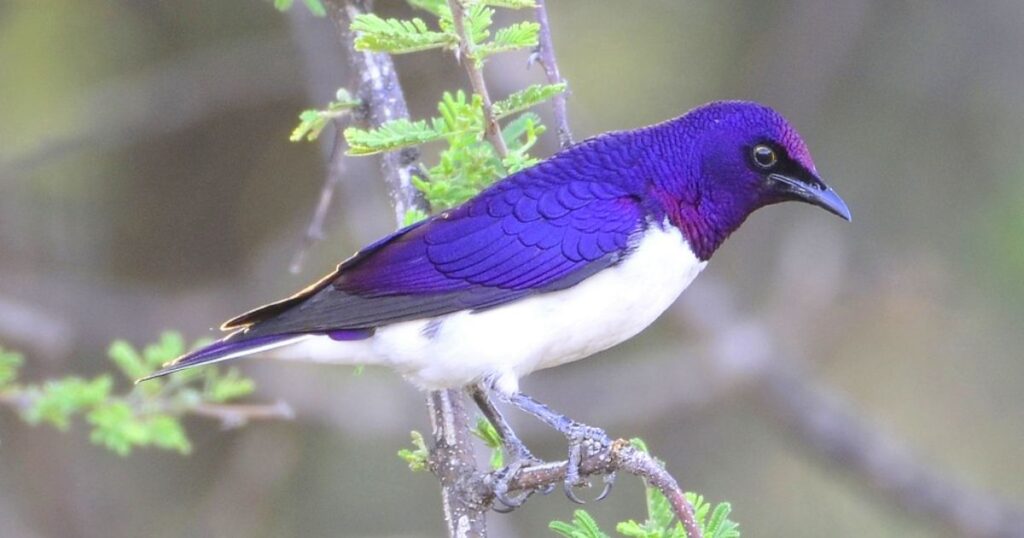
Geographic Range: Southwest Arabian Peninsula to sub-Saharan Africa Habitats: Open woodlands, grasslands, gallery forests Appearance: Males have white breasts and iridescent violet backs. Females have brown heads and backs.
Interesting Behavior: These tiny but stunning birds are monogamous – they only find new mates if their partner dies. Their diet includes fruits like figs and mulberries as well as insects.
9. American Purple Gallinule (Porphyrio martinicus)
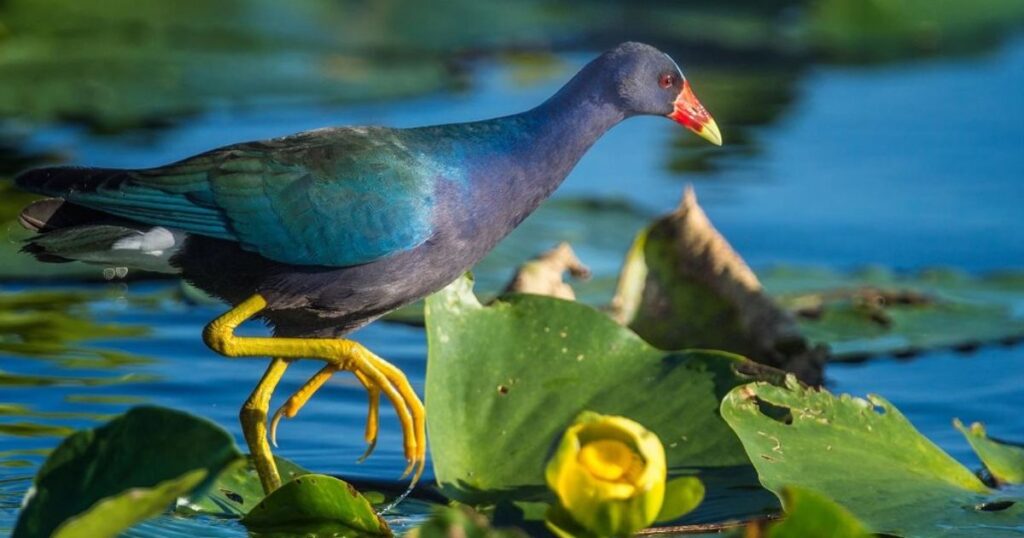
Range: Southeastern U.S. states like Florida, Louisiana, and Texas Habitat: Freshwater marshes
Colors: Pale blue foreheads, red-yellow bills, and purple-bluish bodies that shine turquoise and green.
Cool Trait: Despite being considered “poor fliers,” these marsh-dwellers are expert waders thanks to their large feet that distribute weight evenly across floating vegetation.
10. Mandarin Duck (Aix galericulata)

Native Range: China, Japan, Korea, Russia Introduced Range: Like public parks in California and the UK Habitats: Forests, woodlands, rivers, streams
Striking Features:
- Males are a kaleidoscope of green, brown, orange, red, and iridescent purple
- Females are grayish-brown with a pink-tinged bill and white eye-ring
Dietary Flexibility: Their omnivorous diet shifts with the seasons – plants and grains in fall/winter, aquatic prey like mollusks and worms in summer.
11. Purple Martin (Progne subis)
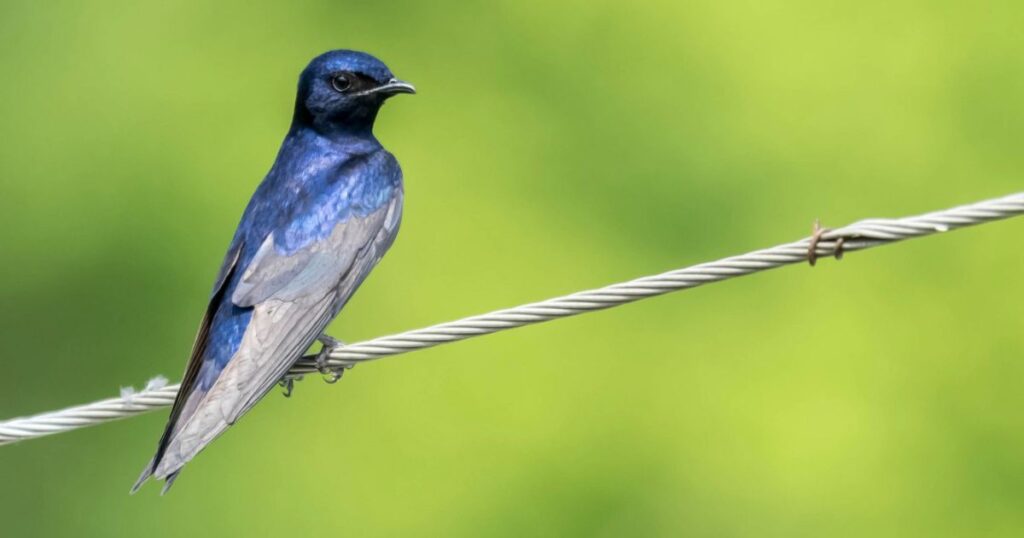
The Purple Martin is the biggest swallow in North America. It looks really cool. The boy ones have shiny purple feathers with a bit of blue. Their wings and tail are dark. Girl ones aren’t as fancy but they still have some purple, gray, and white feathers.
These birds are good at flying and catching bugs while they’re in the air. They like to hang out together in big groups. In the eastern part of the U.S., they usually live in special birdhouses that people make for them.
People who want to help them stay alive often make these birdhouses. Long ago, Native Americans put out hollow gourds to attract Purple Martins, and people still do that today. These birds travel a long way between North and South America, going all the way to Brazil for the winter.
12. Purple Sunbird (Cinnyris asiaticus)
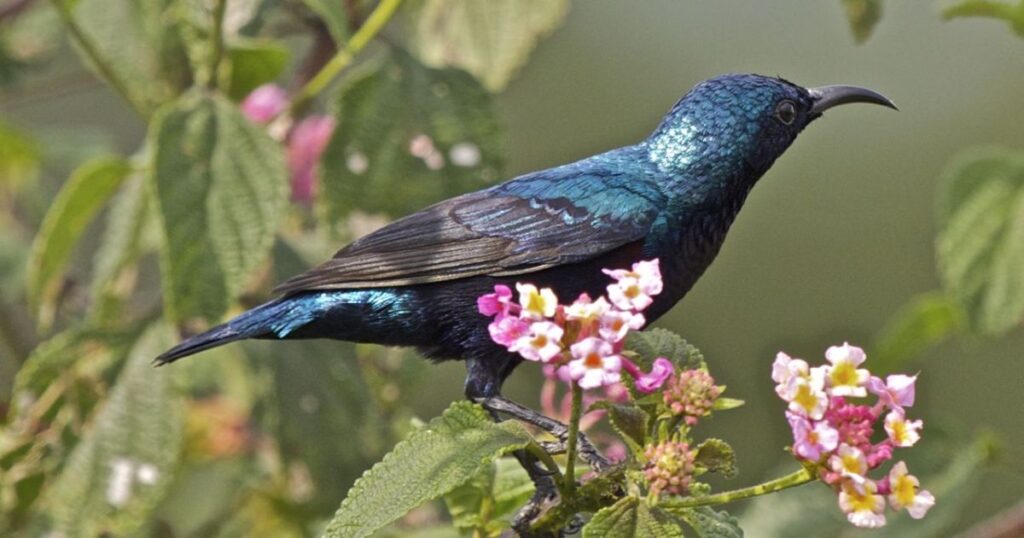
The Purple Sunbird is a beautiful bird found in South and Southeast Asia. The males have shiny dark purple feathers during mating season, while females are brownish with a bit of yellow underneath.
They love to drink nectar from flowers like hibiscus and coral trees, and they fly fast like hummingbirds. But unlike hummingbirds, they take breaks on branches while eating.
In the off-season, male sunbirds look like females to blend in. They also eat bugs, especially when they’re taking care of their babies. These sunbirds build fancy nests shaped like purses, hanging from trees or bushes.
Hundreds of Purple Birds Soaring Across the Globe
While this list covers just a sampling, our world teems with a kaleidoscope of purple-feathered birds. Many owe their radiant hues to iridescent feathers that dazzle when sunlight hits them at the perfect angle.
Interestingly, these vibrant shades often adorn male birds as they try to outshine rivals and attract mates. From tiny hummingbirds to towering herons, the incredible variety and diversity of purple birds showcases nature’s artistic mastery.
So keep your eyes peeled – you never know when one of these regal, purple-tinged beauties might flutter into view and take your breath away!

